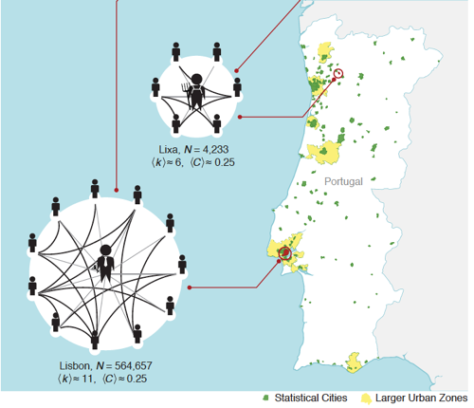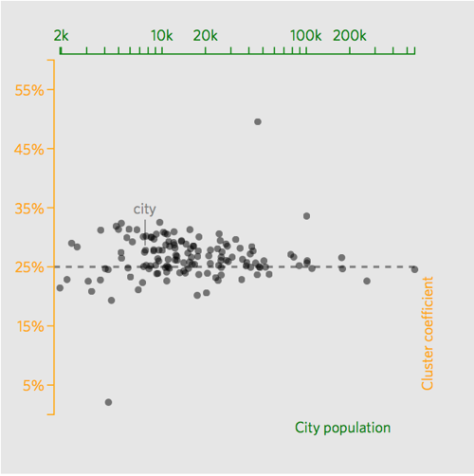 by Jeff Rowley Big Wave Surfer
by Jeff Rowley Big Wave Surfer
How Team Obama’s tech efficiency left Romney IT in dust
[Via Ars Technica]
Despite running a campaign with about twice the money and twice the staff of Governor Mitt Romney’s presidential bid, President Barack Obama’s campaign under-spent Romney’s on IT products and services by $14.5 million, putting the money instead into building an internal tech team. Based on an Ars analysis of Federal Election Commission filings, the Obama campaign, all-inclusive, spent $9.3 million on technology services and consulting and under $2 million on internal technology-related payroll.
The bottom line is that the Obama campaign’s emphasis on people over capital and use of open-source tools to develop and operate its sophisticated cloud-based infrastructure ended up actually saving the campaign money. As Scott VanDenPlas, lead DevOps for Obama for America put it in an e-mail interview with Ars, “A lesson which we took to heart from 2008 [was that] operational efficiency is an enormous strategic advantage.”
The Romney campaign spent $23.6 million on outside technology services—most of it on outside “digital media” consulting and data management. It outsourced most of its basic IT operations, while the Obama campaign did the opposite—buying hardware and software licenses, and hiring its own IT department. Just how much emphasis the Obama campaign put on IT is demonstrated by the fact that the campaign’s most highly paid staff member was its CIO, Michael Slaby, with an annualized salary of about $130,000.
[More]
Failures can be as important as successes in an exponential economy. A useful failure can inform more than some successes. The lower barriers that an exponential economy produces means that failure only presents short term costs that can be rapidly dealt with by longer term successes.
That is, a failure does not necessarily doom an effort, if that failure can be rapidly leveraged to get to success. If you wipe out, but learn from it, then when the next wave comes along, you’ll stay on top of it.
In an exponential economy, there is always another wave to successfully surf.
If, that is, the organization can understand how to manage and utilize the advantages that an exponential economy produces. Here are 7 points to consider.
Interestingly, the Obama campaign hired its IT people internally and used external infrastructure. The Romney campaign hired its IT people externally but created internal infrastructure. That seems to have made a big difference.
The Obama group attracted people interested in a start-up environment that was also a short-term commitment – it would all be over the day after the election. Romney contracted with data consultants and such in organizations that would live on afterwards.
To one, the election was a one-shot attempt at success while for the others it was just one more notch in their consulting gun.
The former really seemed to attract a disrupter mentality much more, one who really liked finding ways around the limitations that were placed in their way, rather than a type that could just find billable hours.
“Campaigns are serious tests of your creativity and foresight,” VanDenPlas explained. “They are unpredictable, agile, and short—an 18 month, $1 billion, essentially disposable organization. Hackers can thrive in an environment like that, to a point where I’m not sure anyone else really can. Everything is over far too quickly to get boring.”
1) Hire the right type of employees. Do not hire doers when disruptors are needed. And vice versa.
Using Amazon Web Services, instead of building their own servers, allowed the Obama for America group to pay for just the amount of server space they needed, when they needed it. They could expand into servers in different regions of the US in order to reduce loads and latency. Romney had everything route to one location, which crashed.
2) Leverage the exponential economy for services and infrastructure. Better to be smart rather than perfect. Better to seek adaptability over control.
Obama for America put their money into people, not into hardware. They spent twice as much money as Romney but also had twice the staff. They actually underspent Romney on IT services and hardware.
This is what the exponential economy does – the cost for things becomes cheaper. A smart organization puts the savings into people, which cannot be easily replaced by digital processes.
By finding the right people and paying them for being the right people, Obama for America produced over 200 apps in an 18 month period, using just about every Open Source approach that is around.
3) Use the savings from the exponential economy to pay for the best people, not for the cheapest.
And they used their community for help:
The human factor in monitoring is huge. There are countless incidents where (OFA User Support Director) Brady Kriss notified us of pending problems derived from community help tickets.”
Romney’s group kept ORCA a secret – such a secret that no one wants to claim they even worked on it – and did only small amounts of testing before it was needed. They completely lost the advantage of having crowds to help perfect the apps.
Crowd feedback is important. Lots of testing and resilience is needed to create large numbers of solid apps. The fundraising segment, for example, was “a multi-region, geolocated, three facility processor capable of a per second transaction count sufficiently high enough that we failed to be able to reach it in load testing. It could also operate if every other dependent service had failed, including its own database and every vendor.”
This complexity can only be reached after actual testing by users.
4) Get your products into the actual hands of actual people as soon as possible. They are best able to find problems.
Redundancy and adaptability go hand in hand. For example, the Obama crew created an app whose only job was to take ‘snaphots’ of the Obama for America website. If a server failed, and the site could no longer dynamically create web pages, the static ‘pictures’ could be used in the interim.
Or, more amazingly, they dealt with Hurricane Sandy, which had severe impacts with people using East Coast server farms, by replicating a complete and functional copy of their whole infrastructure on West Coast servers in 24 hours!
5) Use the benefits of the exponential economy to create resilient and redundant systems. If the price has dropped 5-fold, then you can build two systems and still save money.
The Obama campaign spent over $1 million hosting the website that was accessible to the world. It gave a quarter of that to Amazon for hosting its own internally developed IT.
Romney’s campaign gave a single IT consulting company over $17 million and another $16.6 million to another, Obama for America spent $3.6 million on IT consulting to 36 different companies.
The Innovator’s Dilemma describes how a $50,000 contract to a small group can produce much more focussed work and innovative solutions than even a $500,000 contract to a large group. They care about it more because it matters more to their bottom line.
6) Spread the work around. It is more likely to produce successful solutions than one big contract. It certainly can cost less.
And finally,
“This is the difference,” VanDenPlas said, “between a well run professional machine and a gaggle of amateurs, posing in true Rumsfeldian fashion, who ‘don’t know what they don’t know.’ I would be shocked if such a chasm exists next cycle between the parties—these aren’t mistakes to be repeated if you want to do things like win elections.”
Because of the lower barriers to entry, and the rapidity by which successful processes can disseminate throughout society, everyone catches up quickly. You cannot expect that coming up with something first will provide much of a long term advantage.
The way to stay ahead is to have the right mixture of people cranking the DIKW cycle as fast as possible. As long as your organization can move that cycle faster and smarter than others, you will stay on top of the wave.
7) Continuing rapid cycle development is crucial. Any advantage to accrues to disruptive innovators rapidly disappears, as others follow the path to success.
It is impossible to successfully ride every wave of change. But, creating and managing for the exponential economy can produce an organization scores well when the monster waves arrive.







 by
by  by
by 


